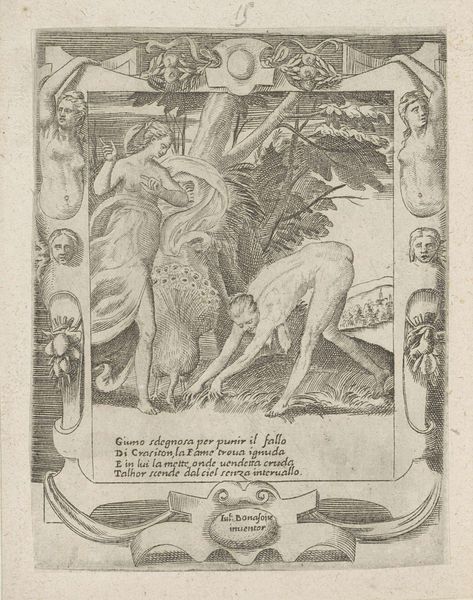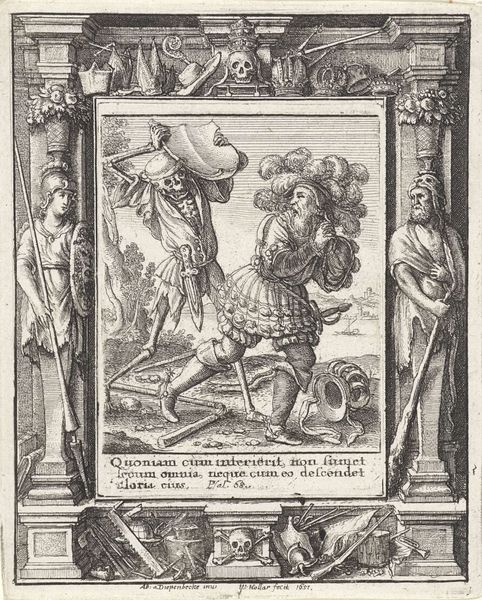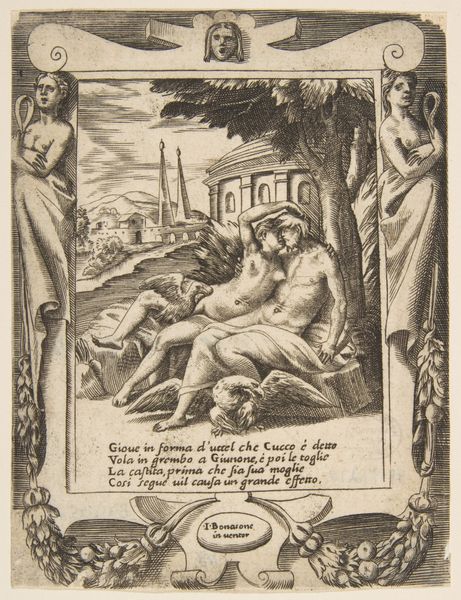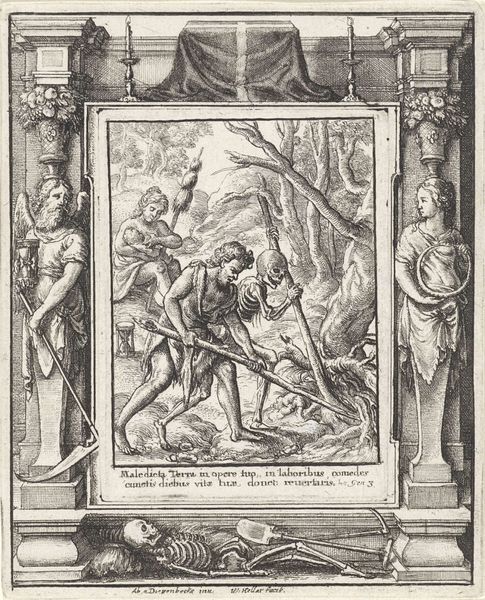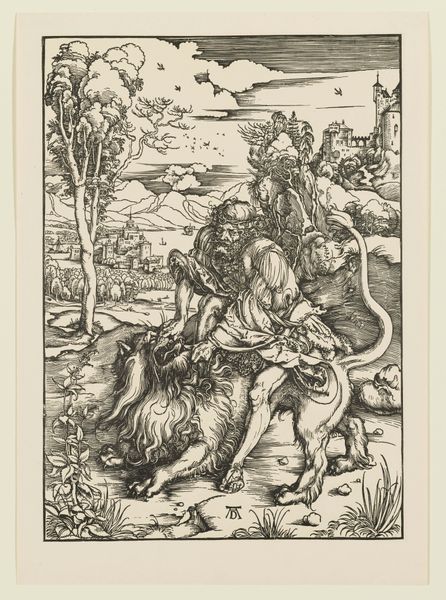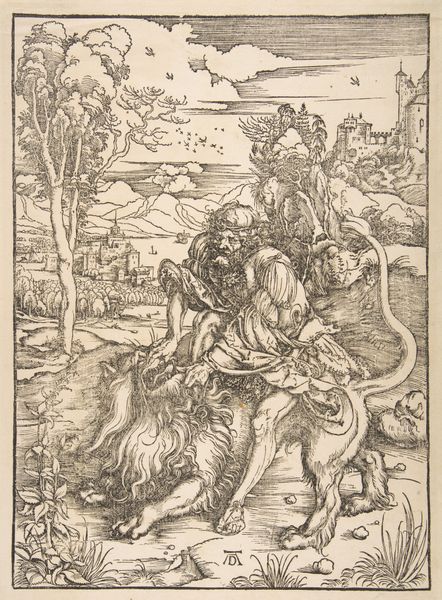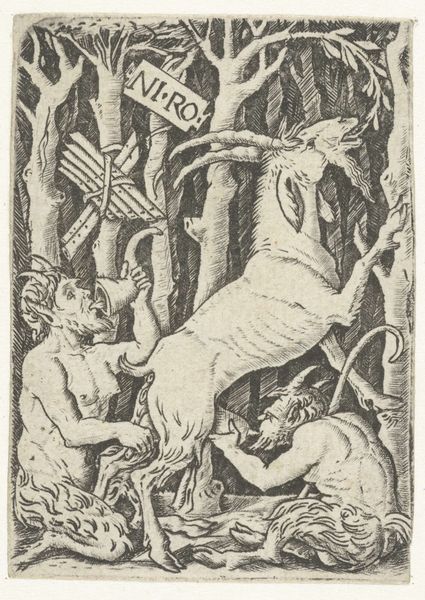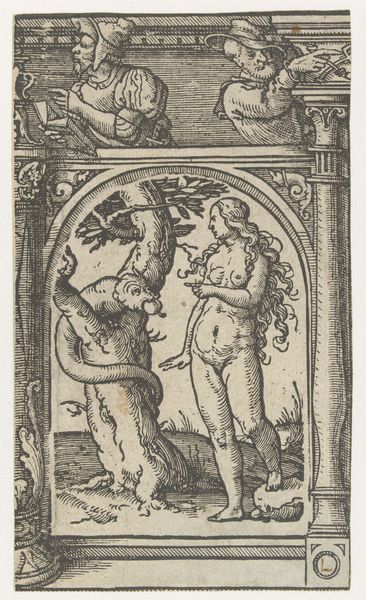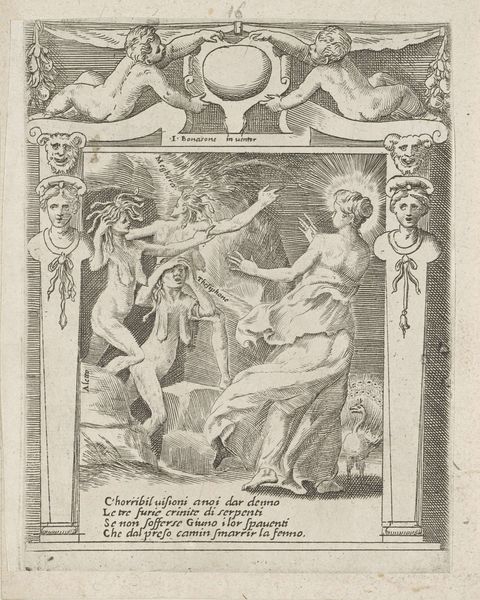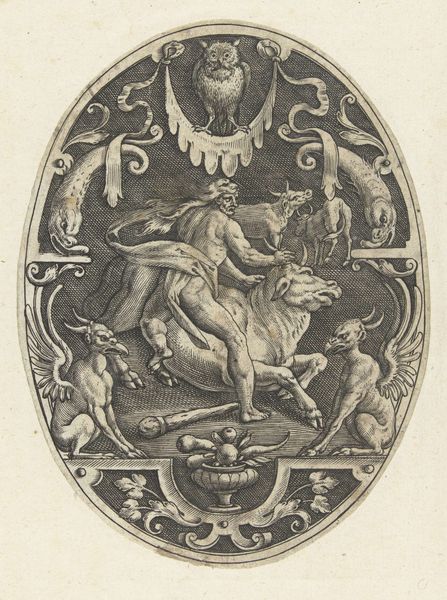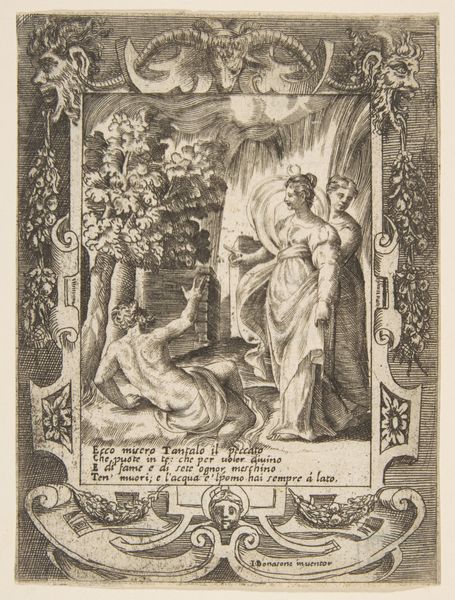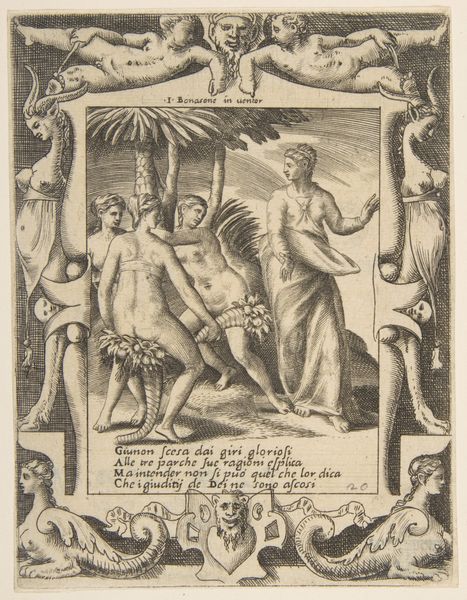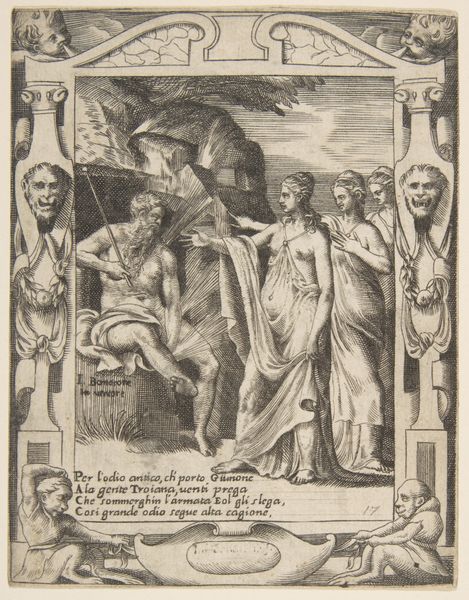
Juno sending famine against Crasiton, set within an elaborate frame, from "Loves, Rages and Jealousies of Juno" 1531 - 1576
0:00
0:00
drawing, print, engraving
#
drawing
#
allegory
# print
#
figuration
#
form
#
line
#
history-painting
#
italian-renaissance
#
nude
#
engraving
Dimensions: sheet: 5 1/4 x 3 15/16 in. (13.4 x 10 cm)
Copyright: Public Domain
Giulio Bonasone created this print depicting Juno sending famine against Craston sometime in the 16th century. It's a potent image reflecting the social and cultural landscape of Renaissance Italy. Prints like this played a crucial role in disseminating classical myths and moral tales to a wider audience beyond the elite. The dramatic scene, set within an elaborate frame, speaks to the prevailing artistic conventions of the time. This was a period where artists often looked to classical antiquity for inspiration, but also one in which the church played a vital role in defining artistic output. Consider how the image creates meaning through visual codes, cultural references, and historical associations. Does it comment on the social structures of its time? Is it self-consciously conservative, or does it critique the institutions of art? To fully understand this work, we might turn to emblem books, classical texts, and the biographies of the artists and patrons involved. It reminds us that art’s meaning is always contingent on its social and institutional context.
Comments
No comments
Be the first to comment and join the conversation on the ultimate creative platform.
